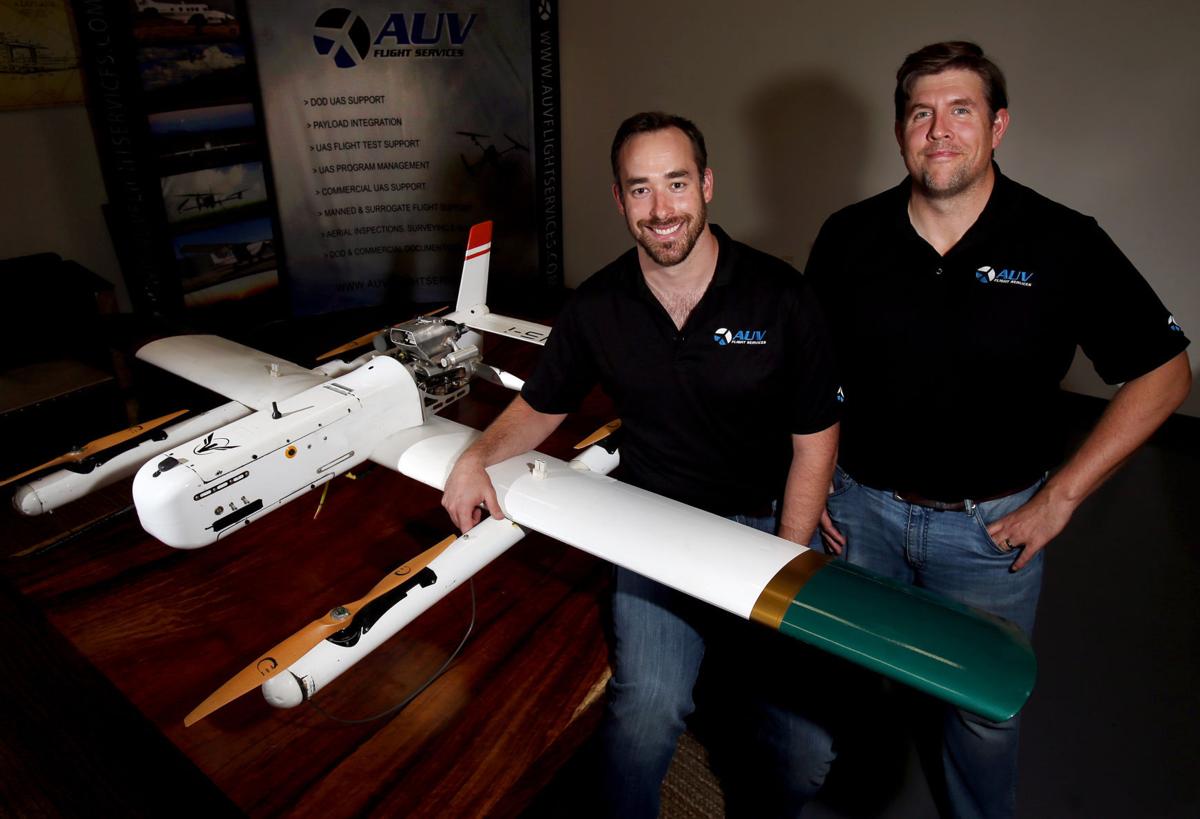Two Tucson companies were part of a team that recently claimed a new U.S. record for long-distance urban delivery by a drone, using cellphone networks to help navigate a simulated 97-mile trip.
Team Roadrunner, a Nevada unmanned aircraft consortium that included Tucson-based Latitude Engineering and AUV Flight Services, conducted the flight in Texas in early May.
After being launched from a central Texas urban location, a drone made by Latitude and remotely controlled by an AUV pilot flew a planned route through regulated airspace using a combination of a mobile command and control system, a visual observer team, and stationary observers located across the flight route.
The unmanned aircraft was flown using a cellular communications link until it successfully landed in Austin to simulate delivery of a package containing a pneumatic part.
The demo flight is one of the latest and longest drone-delivery tests conducted as the unmanned-aircraft industry and federal regulators look to develop standards and rules that could someday make drone deliveries commonplace.
The Team Roadrunner project was funded and led by Volans-i, a San Francisco-based drone delivery startup, with the Nevada Institute for Autonomous Systems, one of seven federally designated unmanned aircraft test sites.
Ground and mobile visual observer support was provided by Embry-Riddle Aeronautical University, and the Nevada group worked with a Texas test site to plan the flight.
Jason McNally, director of business development for AUV Flight Services, said Volans-i sought out his company because of its experience in long-range drone flight and its ongoing relationship with Latitude.
McNally and some other executives at AUV and Latitude got their start in unmanned aircraft at Advanced Ceramic Research, which pioneered long-flight drone research in the 1990s. The company was acquired by defense giant BAE Systems in 2009, spun off into an independent company in 2014 and acquired by Raytheon in 2015.
Founded in 2011, AUV provides flight planning, piloting and other services to unmanned aircraft operators. It employs about 50 people, including about a dozen in Tucson.
Its main customers are the Department of Defense and a railroad track-monitoring program, but AUV also has worked on a variety of special projects, McNally said.
The Texas delivery was made with a hybrid quadcopter and fixed-wing plane developed by Latitude.
It features a set of four electrically powered rotors that allow the craft to take off vertically before switching to a vertical pusher propeller to cruise on its wings.
While startups like Volans-i and big players like Amazon are studying and testing drone deliveries, experts say it will be years before the Federal Aviation Administration finalizes rules to allow delivery drones to operate commercially.
“I think it’s going to be a battle for quite awhile,” McNally said.
But projects like the simulated delivery in Texas are helping the nascent industry to develop reliable, affordable long-distance delivery options.
“It was a test on many fronts. In the event we would lose communications via the LTE (cellular) link, we had regular radio communication to pick it up,” said Craig Baldwin, director of operations for AUV Flight Services.
The military and other large drone operators use satellite communications to track and control the aircraft, but “it’s slow and expensive,” Baldwin said.
“It depends on the mission,” he said. “For payload or package delivery, I think the cell network is probably the most viable way to do it.”
McNally sees the commercial drone delivery business ramping up with small aircraft carrying small, high-value items, such as critical parts or medical materials.
While the Texas drone delivery was the longest of its kind, last fall Latitude flew a drone carrying blood samples 161 miles across Arizona, in a demo conducted by Johns Hopkins University with participation by the University of Arizona and the Mayo Clinic.





